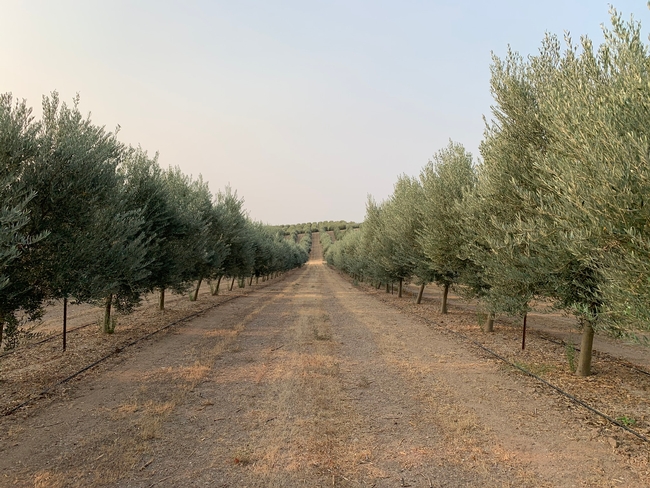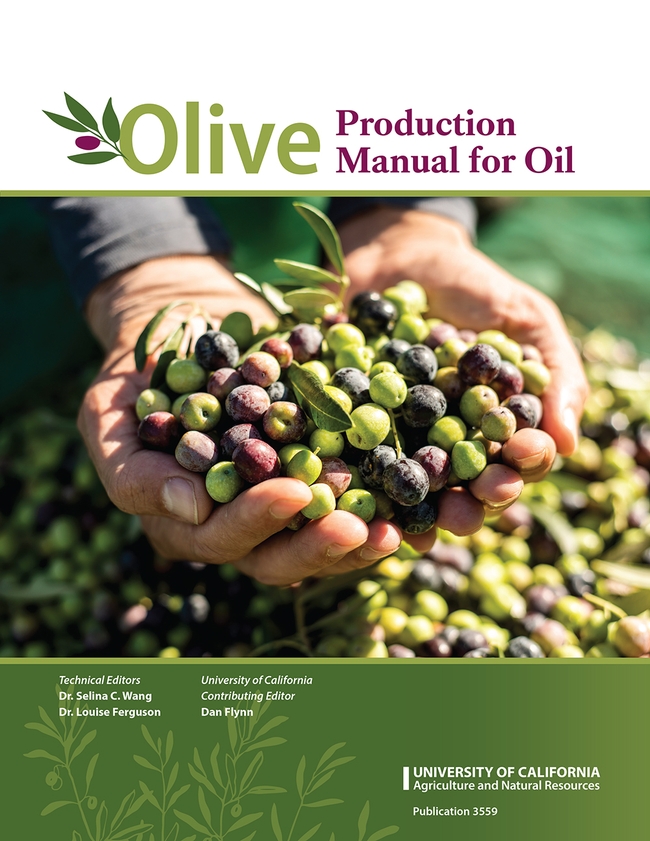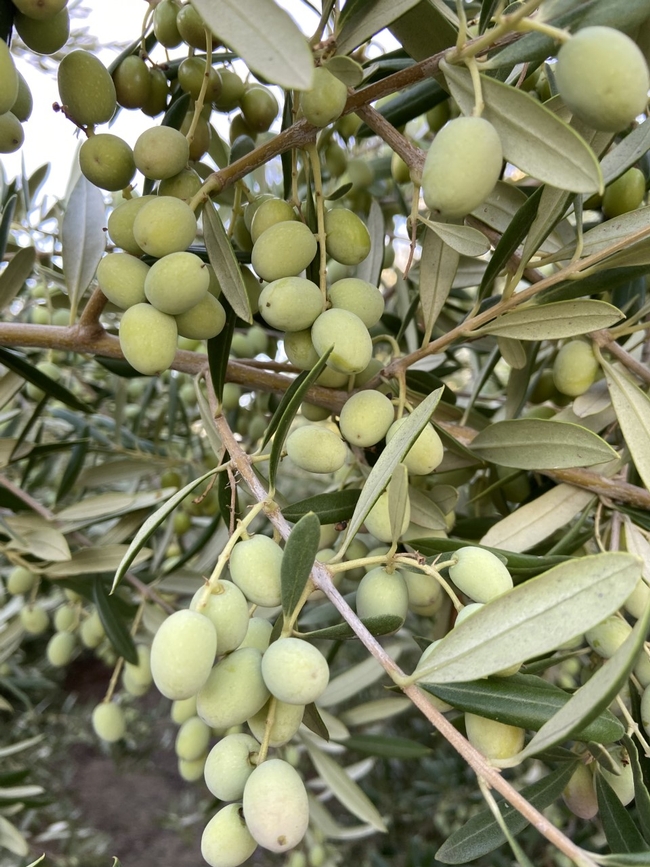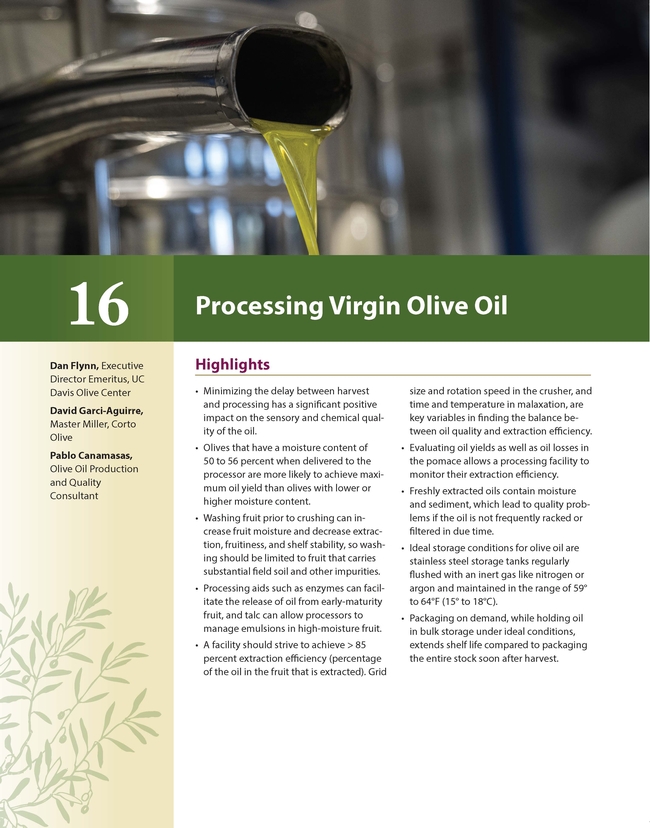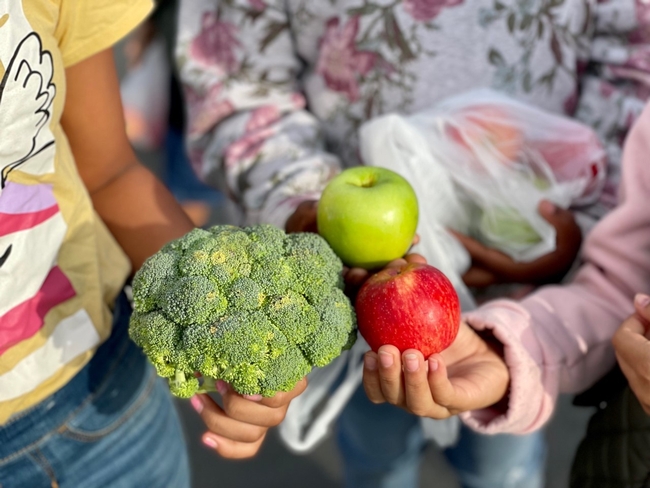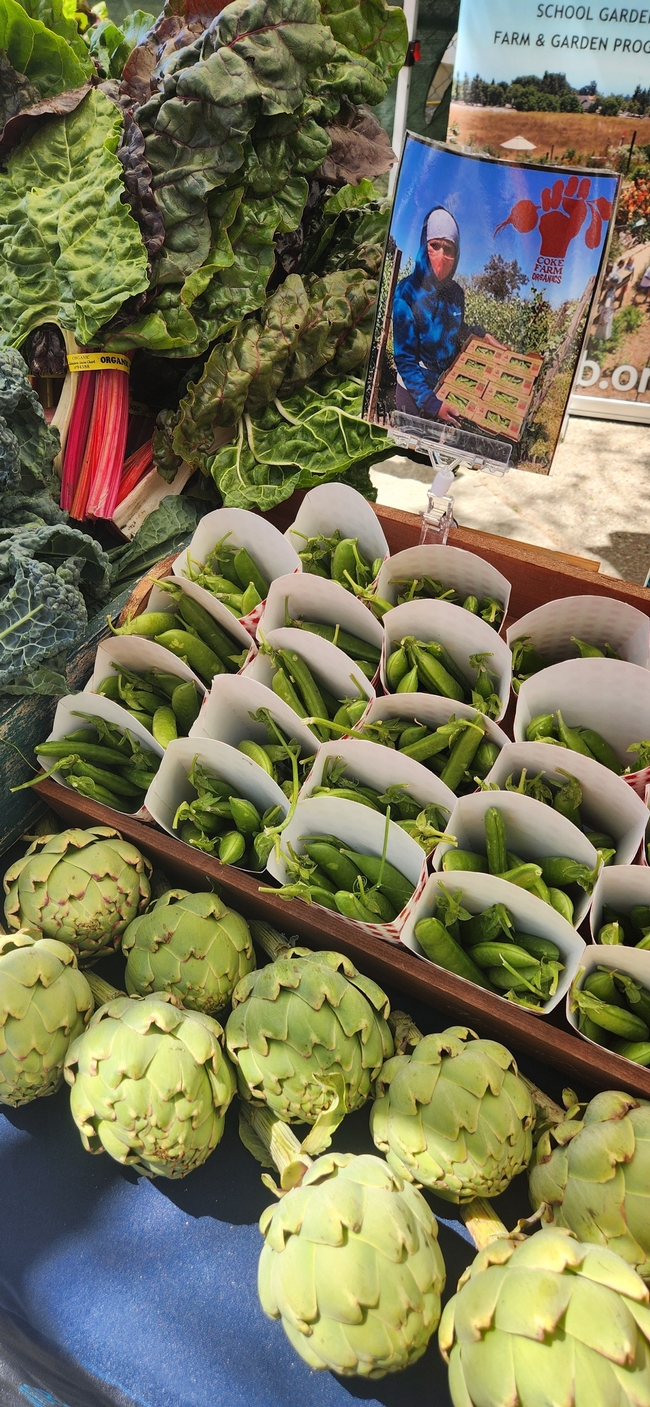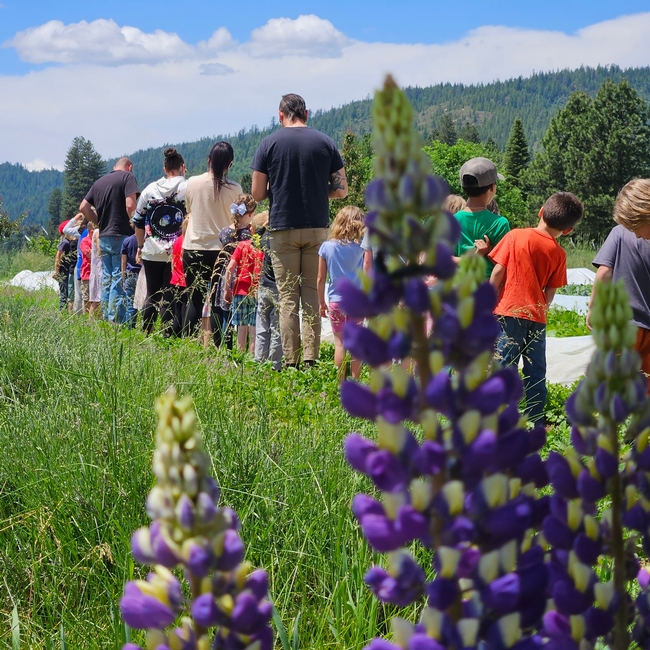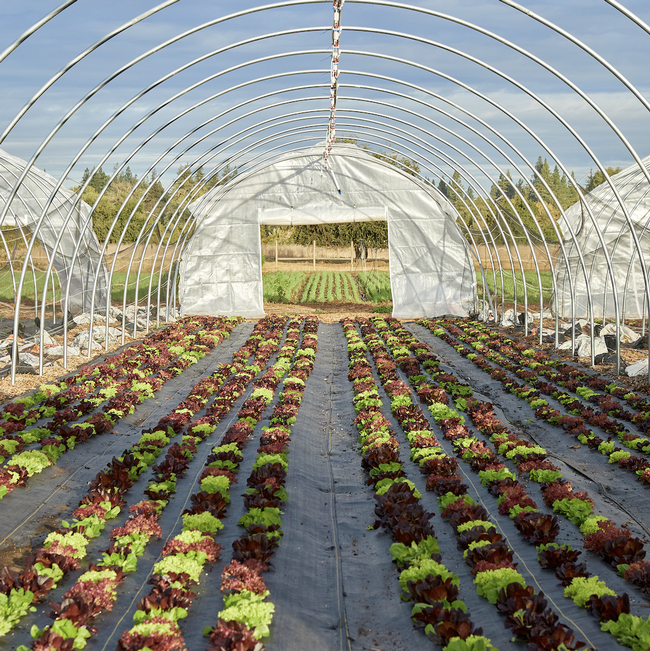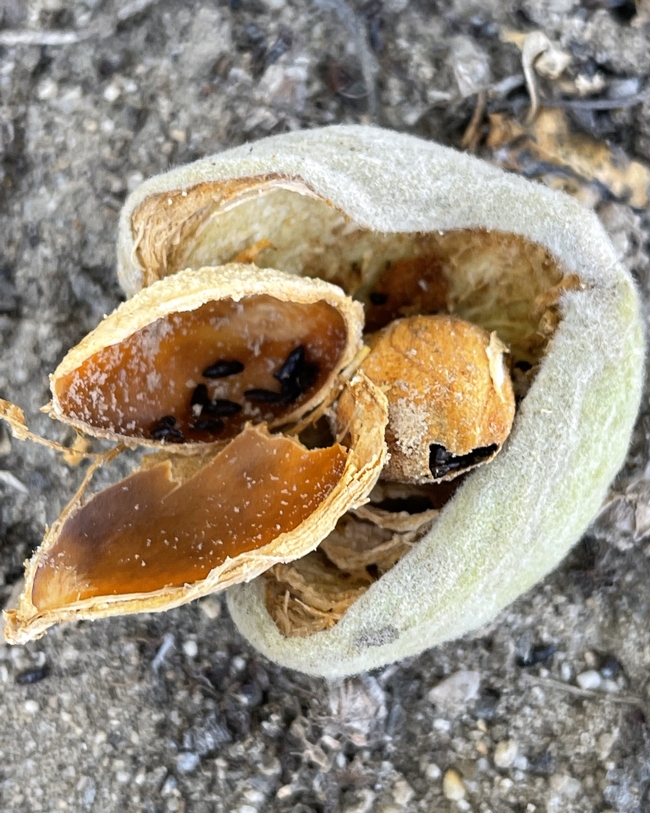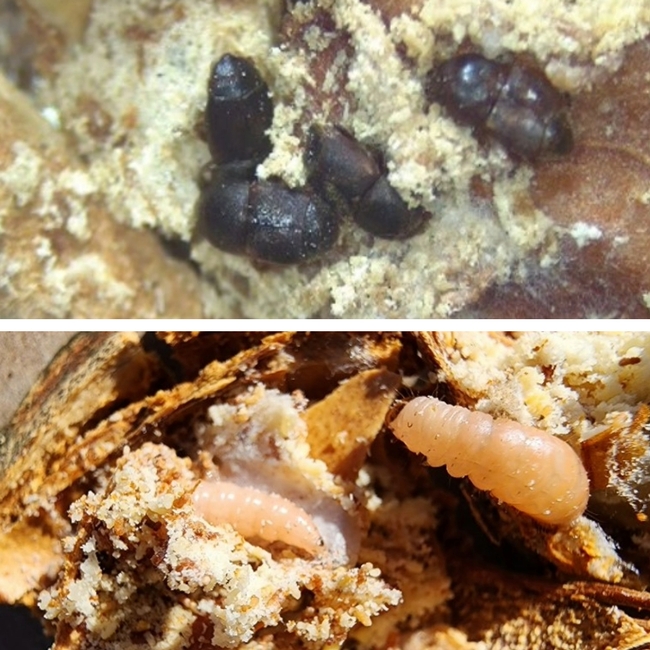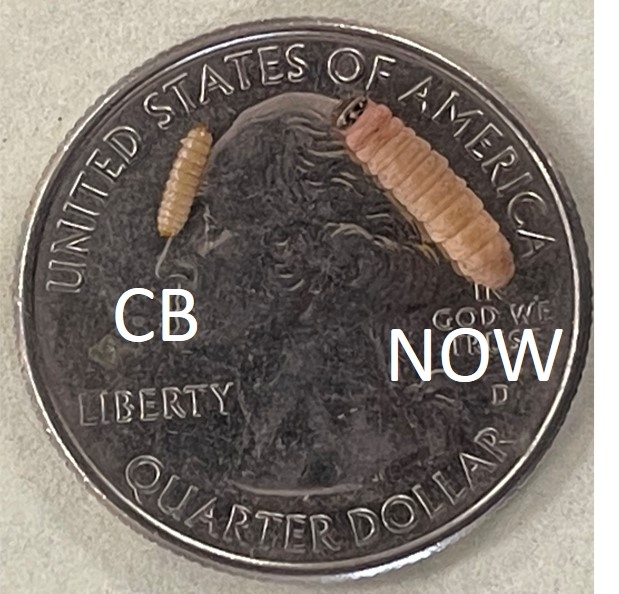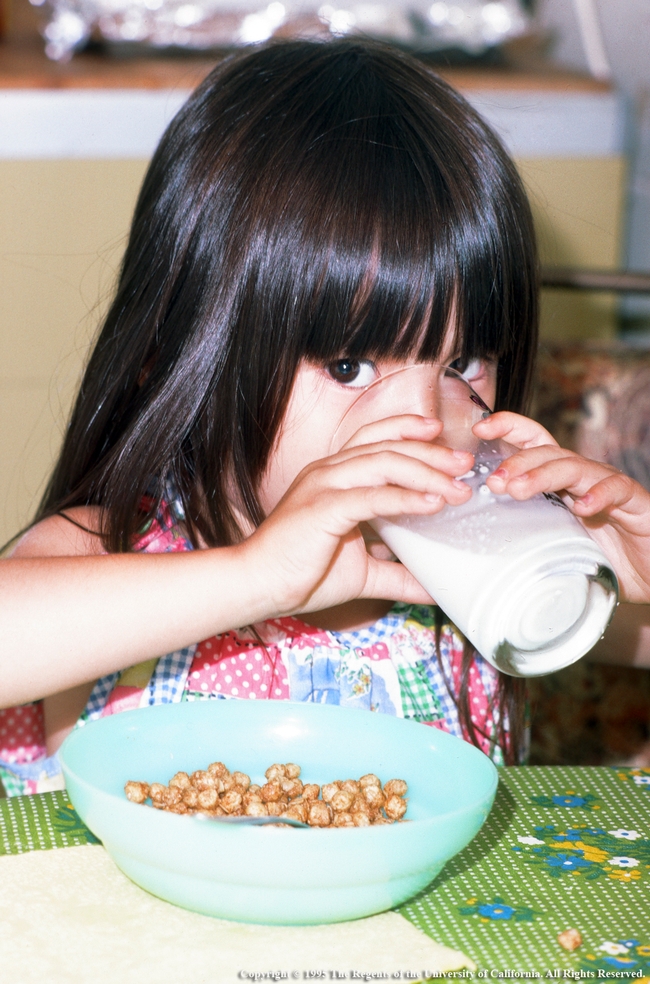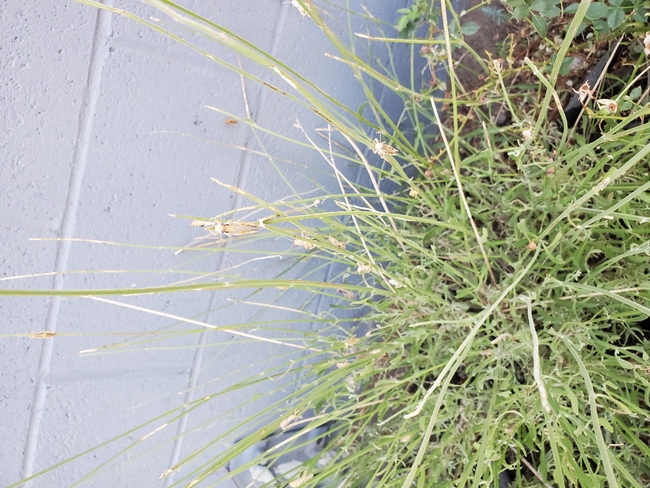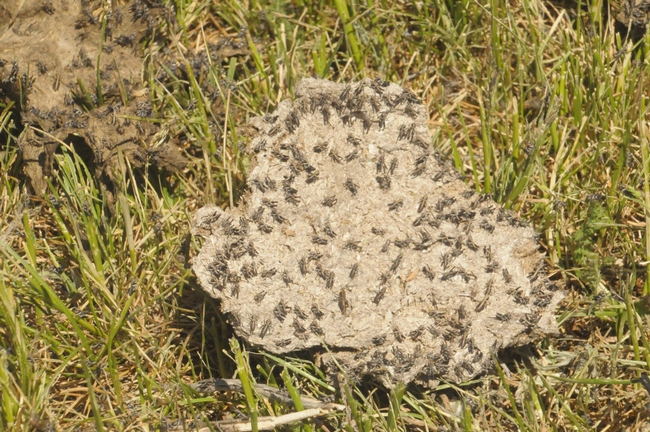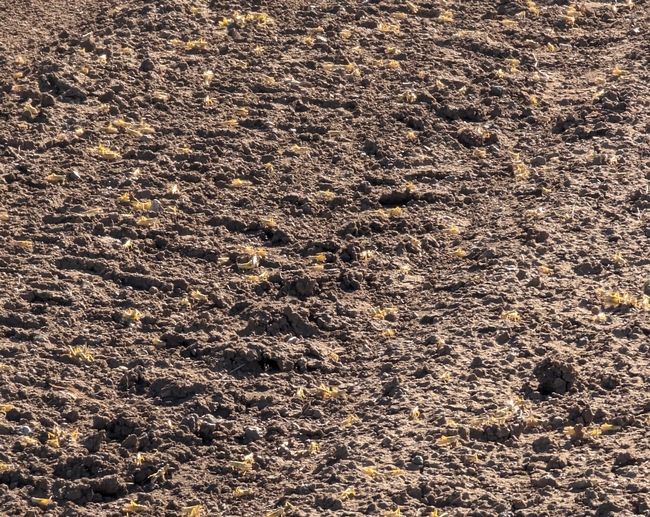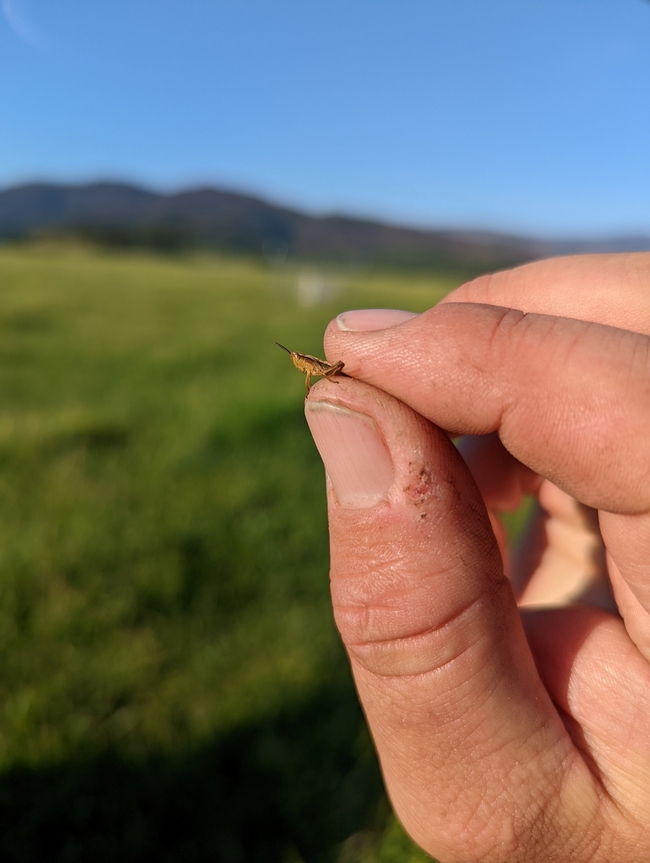UC ANR Food Blog
UC ANR publishes first-ever manual on olive production for oil
Growers, UC Cooperative Extension researchers offer guidance on producing high-quality olives
Facing a deluge of lower-price products from Europe, the California olive oil industry is doubling down on its clear-cut competitive edge: the consistent and bona fide quality of its oil.
“Olive Production Manual for Oil,” a new book published by University of California Agriculture and Natural Resources, aims to help California olive growers maximize that advantage.
“It's a tough market to compete in, but I think the way to win for California is to compete on quality,” said book co-editor Selina Wang, a UC Cooperative Extension specialist in the UC Davis Department of Food Science and Technology. “The quality of California olive oil is unmatched, but you can't make good quality olive oil with bad fruit, so the goal is to get more fruit from the trees – and for the fruits to be high-quality fruit.”
The 273-page manual, available for purchase online, is the first of its kind in the U.S. While some parts of the book are specific to California (which grows nearly all of the olives for domestically produced olive oil), most of the material would be useful to producers in other states, Wang noted.
“Through our conversations with growers, it became clear to us that a manual like this – not a scientific publication but a manual that is easy to follow, written in language that is accessible, and with pictures and illustrations – would be really helpful to the growers,” she said.
Growth of California olive oil industry necessitated creation of manual
Aside from a book focused predominantly on table olives and another on organic olive production (by UCCE farm advisor emeritus Paul Vossen), there was no one-stop, comprehensive resource on the bookshelf for oil olive growers. The need for such a manual had become more acute as oil olives replaced table olives in California orchards during the last 20 years.
Whereas harvesting by hand was historically cost-prohibitive, the introduction of super-high-density planting systems in 1999 made oil olive production more economically feasible. Mechanical pruning and harvesting of new cultivars (Arbequina, Arbosana and Koroneiki) – specifically bred for these densely planted orchards – led to the rapid expansion of oil olives in the state. According to a U.S. Department of Agriculture report, California olive oil production jumped from 2 million pounds in 2006 to an average of 21 million pounds in 2021–23.
With about 37,000 acres of oil olives planted across California, the Olive Oil Commission of California saw the need to support the production of this manual. Championed by Dan Flynn, founder and executive director emeritus of the UC Davis Olive Center, Wang and co-editor Louise Ferguson outlined the contents of the book. They then sought out a mix of growers and industry professionals and UCCE advisors and specialists to write its chapters.
“Most of the information is data-based, from people who are working with the olives,” said Ferguson, a UC Cooperative Extension pomologist at UC Davis. “This is the first data-based olive oil production manual we've had.”
Manual infused with firsthand insights, practical recommendations
Hard-earned experience taught growers a valuable lesson that is conveyed in the book – the need to hand-prune. While mechanical pruning helps control the size of the trees, some hand-pruning is still required to allow light to filter to the leaves. Failing to do so leads to a dramatic decrease in yield.
“That happened in many of the orchards that were inexperienced in these new cultivars and new super-high-density planting systems,” Ferguson said.
She added that other key topics in the manual include irrigation management in a water-constrained state, nitrogen management, harvest timing and orchard site selection. Choosing a good spot for planting is crucial in this era of extreme climate volatility, Ferguson noted, as olive trees are significantly affected by temperature shocks in spring (fruit set) and fall (harvest).
For Wang, another overarching theme in the manual is the importance of testing. Testing the soil, water and leaves provides critical data that growers can use to adjust their inputs and production practices for optimal profitability.
“You may spend a couple hundred dollars on the lab work, but it will pay off, for sure – you're going to increase the health and productivity of your trees,” Wang explained. “Oil olive growers are paid based on the oil content in their fruit; you not only want to have a lot of fruit on the trees, you want to make sure that your fruit are accumulating oil.”
California oil olive growers, practices continue to evolve
Wang and Ferguson hope their book will help California producers compete more effectively in the global marketplace. Currently, about 90% of the olive oil consumed in the U.S. is imported from Mediterranean countries, due primarily to the lower price point. In that region, producers tend to harvest riper olives that produce oil at a greater volume but lesser quality.
In contrast, California growers harvest earlier and produce oil that is higher quality (with more flavor and more antioxidants) and far exceeds accepted standards for “extra virgin olive oil.”
According to Wang, California olive oil mills have nearly maximized their efficiency, and the growth opportunity for the industry is in the orchards: to optimize practices to produce more fruit, and to plant more trees. Wang said the new manual can help on both fronts.
“Just like for other crops, focusing on quality – while increasing efficiency and productivity, and therefore profitability – is the name of the game,” she said.
Ferguson also stressed that knowledge continues to evolve and urged growers to reach out to the editors and chapter authors with their experiences.
“Most of the authors are in California and they're working,” she said. “So if you start to notice things that are different, or you want more information or something is not clear, the authors are available.”
The manual can be purchased at https://anrcatalog.ucanr.edu/Details.aspx?itemNo=3559.
Investments in farm-to-school program stabilize farms, expand climate-friendly farming practices
Small and midsize farms, women and BIPOC farmers especially benefit
A new report reveals that California farmers participating in the state's Farm to School Incubator Grant Program are increasing sales of fresh, local and organic produce, meat and dairy products to schools, according to researchers evaluating program impacts. The report found that 57% of the program's farmers made sales to schools between April and September 2023, representing an average of 33% of their total farm revenues. All food producers funded by the Farm to School Grant Program state that they use or plan to use climate-smart agricultural practices in their operations during the grant period.
While existing research shows that kids who engage with farm-to-school programs eat more fruits and vegetables, are more willing to try healthy foods, and even perform better in class, the California farm-to-school evaluation project examines a gap that most farm-to-school research hasn't addressed: how local purchases from schools affect the agricultural sector and the environment.
The report found that the investments are flowing primarily to the farmers the state seeks to support through this program: Of the 50 producer grantees evaluated in this report, 42% are owned by people who identify as Black, Indigenous and People of Color, and 62% are owned by women. Nearly all (94%) are small to midsize operations.
Three producer grantees revealed that the Farm to School Incubator Grant Program funding likely prevented them from going out of business. “This grant … has and will enable us to do things on the farm that would probably take us a decade to do but we'll be able to do that in one or two seasons. So [it] really moves us forward a lot,” noted one farmer.
Beth Katz, a lead researcher and executive director of Food Insight Group, said, “Farmers are expanding their relationships with local school districts, increasing their sales to schools, investing in infrastructure and staff, and forming new relationships with food hubs that can help them with the often complex purchasing requirements unique to school food. While we're still at a very early stage of understanding the impacts of these investments, we're beginning to see patterns emerge.”
A Humboldt County farmer noted that food hubs, which are also supported by the grant program, are critical to their success in accessing the school food market: “[The food hub] is really a huge game changer to be able to make that one drop in town, even though it's an hour away, rather than going to [several school sites] and just making all these little drops. That's been one of the ways that it's very . . .appealing to us as a farm to participate.”
The report also examines the potential for environmental impacts through direct investments in farmers who use climate-friendly farming practices.
“I'm inspired by the potential for the farm-to-school program to support farmers using environmentally beneficial practices like reducing pesticides, planting cover crops and growing organic — and to help farmers expand or adopt these practices. It's essential these farmers have a market for what they grow to see durable environmental benefits,” said Tim Bowles, who is leading the environmental impacts assessment for the evaluation team and is an assistant professor in the Department of Environmental Science, Policy & Management at UC Berkeley and lead faculty director of the Berkeley Food Institute.
“We're also seeing farms actually expand their acreage in order to sell to schools, suggesting this is a desirable market. We're investigating the environmental impacts from these investments, especially for climate,” Bowles said.
As with many new programs aimed at building out long-delayed infrastructure, school food systems improvement demands a deep-rooted approach.
“The challenges around changing a complex school food system are substantial,” Gail Feenstra, a pioneer in farm-to-school research and co-lead on the project from UC ANR stated. “Decades of research shows the value to children from fresh, locally sourced food. However, what is becoming more clear from this research is that long-term investments in the full farm to school system are crucial. Without regional-level infrastructure, staffing, aggregation and distribution in place to support getting that locally grown food from farms to the schools and kids, we'll have challenges moving the needle.
"Fortunately, the state's strategic and innovative investments in the entire farm to school supply chain – meaning funding for school districts, farmers and also their regional partners, combined with support from CDFA's regional staff – are beginning to address those long-standing challenges.”
Visual ID guide from UC aids in managing new almond pest
Nut orchard hygiene key to control carpophilus beetle, say UCCE, UC Integrated Pest Management experts
Since the first reports of a new almond pest – the carpophilus beetle (Carpophilus truncatus) – came in during fall 2023, it has become clear that the beetle is widely dispersed across the San Joaquin Valley.
“My lab has identified infestations from every county in the San Joaquin Valley; we have found infestations in both almonds and pistachios, and we will likely find infestations in walnuts this fall,” said Houston Wilson, a University of California Cooperative Extension entomology specialist at UC Riverside. The California Department of Food and Agriculture has confirmed the beetle's presence in Stanislaus, Merced, Madera and Kings counties.
Historically a major threat to almond production in Australia, the beetle – as larvae and adults – feeds directly on the nut kernel. In California, some almond growers have lost 10 to 15% of their yield – a “significant economic loss,” according to Jhalendra Rijal, University of California integrated pest management (IPM) advisor for the region. Given the prominence of almonds as a commodity, even a 1% overall reduction statewide represents an approximately $70 million loss.
“This year there has been a lot more reports from PCAs [pest control advisers]; they're sending me the pictures of the damage and beetles,” said Rijal, noting that the increase is likely due to greater awareness of the pest.
To help almond growers identify the carpophilus beetle and develop management plans, Rijal, Wilson and their IPM colleagues have put together a visual ID guide for the beetle and the damage it causes, as well as telltale signs of navel orangeworm (Amyelois transitella) and ant damage. In particular, the experts would like PCAs and growers to differentiate between the carpophilus beetle and navel orangeworm, another key pest in almonds.
“Even though their way of causing damage looks more or less similar, we're dealing with two different types of insects,” Rijal explained. “One is a Lepidoptera moth [navel orangeworm], and the other one is a beetle – many of the management practices and biological controls would be different for these two different things.”
To control carpophilus beetle, ‘sanitize, sanitize, sanitize'
One crucial cultural practice for managing both pests, however, is destroying the remnant “mummy” nuts – the nuts that remain in the orchard postharvest. They serve as overwintering habitat for the carpophilus beetle, as well as its sustenance for the next generation of beetles in spring.
“The best way to manage this pest is to do the orchard hygiene – continuing the winter sanitation, destroying the nuts that are on the ground and on the tree and on the berms,” Rijal said.
Based on observations in Australia and locally, carpophilus beetles tend to rely more on mummies on the ground, whereas navel orangeworm generally favors mummies in the tree canopy. Correctly identifying the pest – with help from the new ID guide – enables growers to better target and prioritize their management efforts, Rijal said.
“What we are strongly emphasizing is that growers need to sanitize, sanitize, sanitize to control both pests,” Wilson added.
Correct identification of the pest would also prevent unnecessary application of insecticides, as those used for controlling Lepidoptera such as navel orangeworm would be largely ineffective on the beetle.
Indeed, another insight shared by Australian experts is that the carpophilus beetle cannot be controlled just by insecticide.
“Insecticides are not very efficient, given the cryptic nature of these beetles; exposing these beetles to the insecticide is very hard,” said Rijal, noting that the beetle spends most of its life cycle protected inside the nut.
Reporting carpophilus beetle infestation helps researchers
This harvest season, Rijal advises almond growers to harvest as efficiently as possible, to minimize the number of mummies that need to be cleaned up. And because signs of damage (like damaged hulls and frass) are most obvious during harvest time, Rijal said growers should review the new guide, using the photos and other resources to help identify potential pests.
If the grower or PCA suspects a carpophilus beetle infestation, they should contact the UCCE farm advisor in their area.
Scientists are looking to expand their knowledge about this relatively new pest to California. In the coming weeks, for example, researchers are planning to survey for the carpophilus beetle in the Sacramento Valley.
“Technically it has not been found there, but we suspect that we'll find it this fall when we go looking for it,” Wilson said.
Researchers are also collecting samples from infested orchards to better understand the biology of the species, as well as how it progresses through and responds to seasonal and climactic changes. In addition, they are analyzing data from a trial study of an insecticide that might be used as a supplemental control measure.
“This is our first full season dealing with this insect, and there are still many things we need to understand,” Rijal said. “We are continuing our research efforts on all fronts.”
UC seeks toddler volunteers for milk study
Researchers to study whether whole or low-fat milk is best for toddlers
San Francisco Bay Area toddlers who drink cow's milk are being sought to participate in a 12-month study by UC Nutrition Policy Institute, a part of University of California Agriculture and Natural Resources. Milk will be provided for free to participants.
Milk provides children with calcium, protein and vitamin D, which are essential for health and brain development. In the U.S., the American Academy of Pediatrics recommends that children switch from whole milk to low-fat or nonfat milk after age 2 to reduce their intake of saturated fat and calories.
“The purpose of this UC study is to see how the type of milk toddlers drink affects their health, growth and development,” said Kassandra Bacon, NPI project policy analyst.
Researchers with the Nutrition Policy Institute are recruiting children ages 23 to 30 months old. The 625 toddlers will be randomly assigned to drink either whole fat or 1% fat milk starting at age 2. The scientists will assess diet, health and developmental outcomes.
“We will follow each participant for one year, collecting baseline and follow-up data,” said Ryan Williams, a NPI project policy analyst and registered dietitian who is involved in the research.
For 12 months, the scientists will measure each child's height, weight, waist and head circumference. At the beginning and end of the study, parents will be required to take their children to a local lab for a blood draw to assess lipids, cholesterol, insulin resistance and vitamin D status, as well collect a sample of their child's stool so the scientists may analyze the gut microbiome. During a home visit, researchers will also interview parents about their child's development.
Benefits to participants
The assigned milk type will be delivered to participants free of charge via a grocery delivery service. Participating parents will receive advice from a registered dietitian to support healthy milk consumption as part of a balanced diet. The Nutrition Policy Institute also will send the parents monthly newsletters with general health tips. Participants also may earn up to $275 in gift cards by completing the study.
Requirements to participate
Participants for the milk study must meet these requirements:
- Child must be 23 to 30 months old and have public or private medical insurance
- Child's parent/legal guardian must be 18 years or older
- Child must live with the participating parent/legal guardian in the San Francisco Bay Area (Alameda, Contra Costa, Marin, Santa Clara, San Francisco or San Mateo counties)
- Child's parent or guardian must speak English
Children are ineligible for the study if they are:
- a WIC participant
- lactose intolerant
- allergic to milk protein
Lorrene Ritchie, NPI director and registered dietitian, and Anisha Patel, pediatrician at Stanford Medicine Children's Health and professor in the Division of General Pediatrics at Stanford University, are the principal investigators for the study.
For more information about the research and to sign up for the study, visit https://npi.ucanr.edu/milk.
Grasshoppers gobble crops, farm profits
UCCE advisors share control, abatement strategies across Northern California
That buzzing noise in Northern California is the sound of grasshoppers chewing a path of destruction through crops and pollinator-friendly plants as they hop across an expanding area.
This is the fifth year in a row that massive numbers of grasshoppers have overrun Modoc County and “probably the worst I've seen yet,” said Laura Snell, a University of California Cooperative Extension livestock and natural resource advisor in Modoc County, located in the northeastern corner of the state.
In past years, Snell has heard from farmers who have lost up to 70% of their hay crop. This year, she is hearing of grasshopper damage from farmers who grow a wider array of crops, including onions and garlic – crops that the pests eschewed in past years.
“I've had an even broader group of producers contact me about damage,” Snell said. “Our local vegetable producers are being affected, decreasing farmers market and food hub products. Bee producers are not seeing good honey yields due to grasshoppers eating huge amounts of pollinator plants.”
Modoc County isn't alone. Lassen, Sierra, Plumas, Siskiyou, Tehama, Butte, Placer and Nevada counties are being invaded by grasshoppers.
“The county ag commissioners are circulating a survey to get an idea of other counties that may be affected,” Snell said. “Things like droughts and – I suppose, fires as well – would affect grasshopper migrations.”
While scientists don't know what's causing the explosive growth of grasshopper populations, there are some contributing factors, according to Tom Getts, UC Cooperative Extension weed ecology and cropping systems advisor for Lassen, Modoc, Plumas and Sierra counties.
In the past, grasshopper outbreaks seemed to be more isolated, and the populations tended to crash after a year or two. Getts said, “For whatever reason, the population cycle does not appear to have been broken, and they continue to have high numbers.”
Grasshoppers can consume 30% to 250% of their body weight per day, according to a fact sheet about grasshoppers, co-authored by Getts. While grasshopper nymphs walk, adults can fly 15 miles or more.
Getts and UC Cooperative Extension farm advisors have been giving presentations throughout the intermountain region on grasshoppers and the various control methods.
“The difficulty to controlling them is the scale and their ability to move,” Getts said. “The insects need to be targeted at a small growth stage for the tactics to be most efficacious. Once they are adults, it doesn't matter what one grower does to control them if their neighbor doesn't do anything.”
UCCE farm advisors in multiple counties are working on abatement options.
They recommend monitoring in April–May to control grasshoppers while they are still nymphs and susceptible to insecticides. Birds, spiders, rodents and fungi also can help keep the insects in check, but years of drought have reduced the fungi.
“The population of grasshoppers in the region have increased in size, scope and density in recent years,” said Rob Wilson, a UC Cooperative Extension agronomy and pest management advisor and director of the Intermountain Research and Extension Center in Tulelake.
The massive growth and spread of the pests is a problem because 30 pounds of grasshoppers can eat as much forage as a 600-pound cow can eat per day, he explained.
Part of the challenge of controlling grasshoppers is their changing behavior. In the past, grasshoppers would go away after a couple of years, now they persist. They used to thrive in dry fields, but last year, grasshoppers migrated 10 to 20 miles into irrigated fields, Wilson said.
Wilson, who has been monitoring grasshoppers near Tule Lake since early April, said that In some fields, there were 20 to 30 nymphs per square yard. More than eight nymphs per square yard can cause economic damage.
As if the grasshoppers themselves weren't enough of a nuisance, they attract other pests, including blister beetles.
“As the grasshopper population increases, you are bound to see an increase in all of the species that eat them over time,” Getts said. “Blister beetles cause terrible blisters when they get on your skin, hence the name, but they can also be problematic for livestock if they contaminate bales of hay.”
Getts recommends that growers take steps to prevent grasshopper populations from building over successive years. Growers should coordinate with neighboring growers to treat their fields due to the limited longevity and efficacy of treatments on individual fields.
[Editor's note: The sentence comparing the appetite of grasshoppers to that of cows was revised to clarify that grasshoppers aren't eating cows.]


